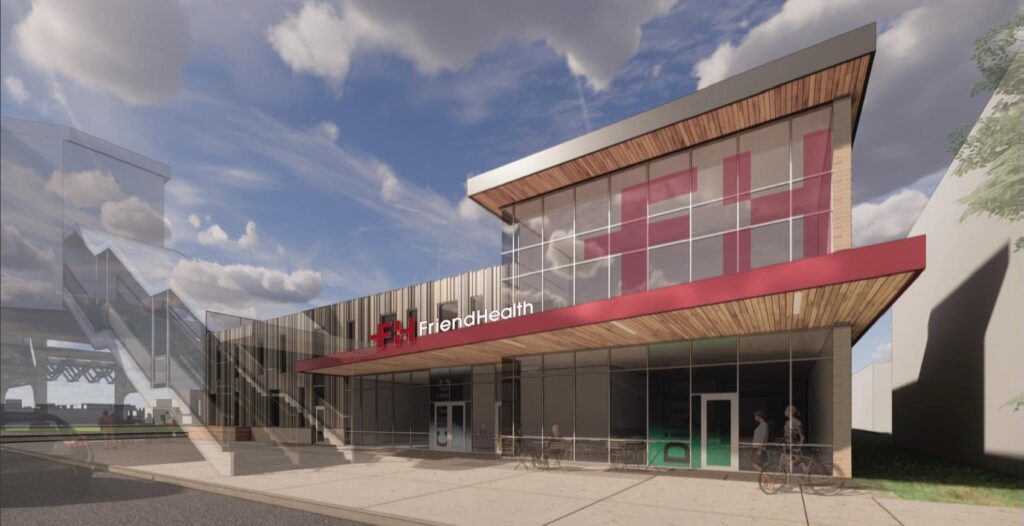
There are a few things in life that people should never have to worry about…food…shelter…healthcare. Unfortunately, in this country and in the city of Chicago, all three can have impediments to access for many residents in disadvantaged neighborhoods. Food deserts pose a hinderance to having fresh food within a reasonable distance of people’s homes. Mounting housing/rental costs make shelter unattainable and unaffordable for an increasing number of people and having adequate insurance for healthcare is out of reach for many in low-income communities.
In large cities across the nation, lack of sufficient healthcare is at a critical stage, especially in low-income areas. Residents who live in these communities often are stricken with chronic illnesses such as asthma and other respiratory issues, high blood pressure, diabetes, kidney ailments, and other maladies that can be associated with their living environments.
“Healthcare disinvestment in highly segregated, low-income communities mirrors the broader societal disinvestment in these communities,” explains Davis Johnson in an article for Healthcare Financial Management Association. “The impact of this structural disinvestment on individual and community well-being is catastrophic… As a consequence, [Chicago’s] South Side residents live shorter, harsher lives.”
Low-income patients who lack basic insurance often go without the medical care they desperately need. And the residents in these communities who are in need of medical attention often must use the emergency room as the best alternative to receive the care they need.
A considerable number of these communities are designated as Medically Underserved Areas (MUA) and Health Professional Shortage Areas (HPSA) which is described as insufficient numbers of health care providers.
In Chicago, a city of 77 neighborhoods, some communities are economically stable and thriving, and other communities have had their peaks and valleys in terms of viability.
For instance, over the years the Woodlawn neighborhood has seen fallout from disinvestment. Once a population of over 80,000, Woodlawn is now home to only 24,000 residents, according to Chicago Metropolitan Area for Planning (CMAP) 2022 Community Data Snapshot. In its heyday, it was the location of the World’s Columbian Exposition of 1893. Then an era of racial practices with restricted covenants for African Americans led to white flight and redlining and overall economic decline. Now, its current path is one of hopeful resurgence because of the Obama Presidential Center and ongoing investment from the University of Chicago.
This community shares its north boundary with Hyde Park (an economically strong area) and the University of Chicago. But even being close to the University of Chicago and its medical center, Woodlawn still is considered a (MUA) and HPSA.
In order to satisfy the healthcare needs of Woodlawn residents and residents in 17 other zips codes across Chicago’s South Side, Friend Health, a federally qualified health center (FQHC) not-for-profit organization, transferred its headquarters and administrative offices to a 44,100 square feet facility at 6250 S. Cottage Grove Avenue, in the heart of Woodlawn with the help of Chicago Community Loan Fund, IFF and New Market Tax Credits (NMTC).
“Because of the communities we serve, CCLF sees firsthand the disparity in many of our neighborhoods and recognizes the importance of assisting organizations like Friend Health to better position themselves to bring about a positive change for the residents of Chicago,” states Calvin Holmes, CCLF President.
Friend Health was established in 1997 to provide “primary healthcare services to the vulnerable and medically underserved populations in a manner that is accessible, affordable, comprehensive, and culturally appropriate.” It now services more than 30,000 patients throughout its facilities providing: Pediatrics/Adolescents (Children’s Health), Adult Medicine, Obstetrics and Gynecology (Women’s Health), Infectious Disease, Behavioral Health, Dental Services, Asthma Clinic Services, Laboratory Services, Social Services, Care Coordination, Insurance Enrollment Assistance, Nutrition Services, and Legal Assistance Services.
Recognizing the need, Friend Health was founded by the Friend Family Foundation through funding from the Michael Reese Health Trust, which facilitated the joining of two University of Chicago clinical practices: Human Resources Development Institute (HRDI) combined with Friend Health in 2017.
“We provide community health, and we knew that we could have a greater impact by embedding ourselves deeper into the community. And you don’t get any deeper into the Woodlawn community than 63rd and Cottage Grove, “explains Wendy Thompson, CEO, Friend Health. “That’s the epicenter. And so, we know that we are better serving the community by being at the base of the 63rd and Cottage Street train station. It is also worth noting that being at 63rd Street and Cottage Grove Avenue is only a few blocks from Parkway Gardens, one of the largest subsidized housing units in the city. We know that we’re two blocks away from the school and across the street from the library. We’re next door to homes. So, we’re part of the community. And so that was also the intent to embed ourselves so that we could increase access to healthcare services.”
Friend Health is committed to its mission to improve community health by providing access to high-quality, whole person care and a Vision to be the community health provider of choice! This truly is community-based care at its best.